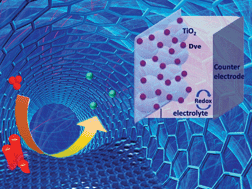Carbonaceous materials as substitutes for conventional dye-sensitized solar cell counter electrodes
Abstract
Due to the rapid growth in energy demand, renewable energy plays a great role in both economics and energy supply. Recently, solar cells which convert solar energy to electricity have been proposed as typical renewable energy devices in this regard. Dye-sensitized solar cells, as the third generation of solar cells, have been attracting increasing attention. The development of counter electrodes, as one of the key components in electron cycling and redox reaction (to regenerate oxidized electrolyte), has faced several challenges due to their high price and the complicated deposition process of conventional platinum electrode. As cost effective materials, scientists have proposed carbonaceous materials as Pt alternatives that satisfy the catalytic role. In this paper, carbonaceous materials as counter electrodes are reviewed. Carbon structures present a high surface area as well as low impedance which lead to efficient solar cells. Improvements occur through modulating the porosity or nanostructure which is determined by the material morphologies; in this regard, some disadvantages associated with the fabrication procedure, also are included in the discussion.


 Please wait while we load your content...
Please wait while we load your content...